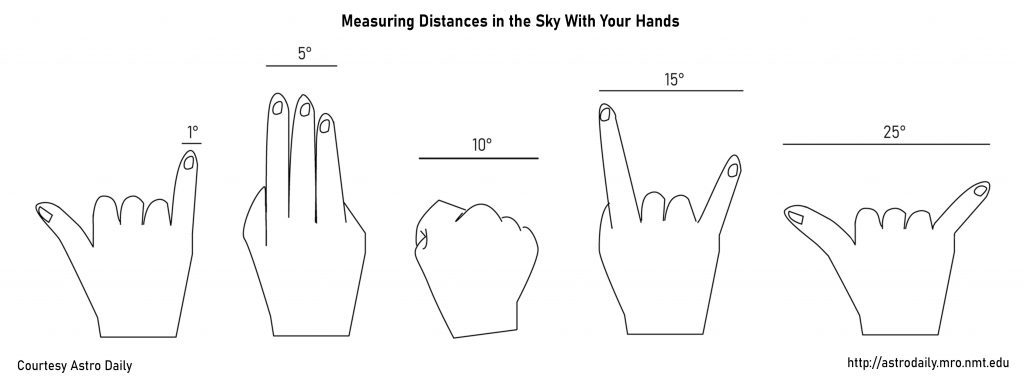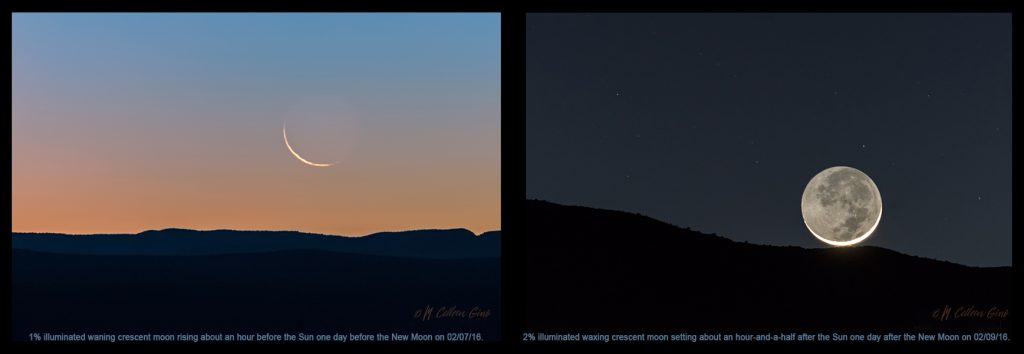I am pleased to announce that Astro Daily will be sharing Jon Spargo’s informative “what’s up” article at the first of each month. Astro Daily will supplement Jon’s article with relevant illustrations, images, and sky charts. Thanks so much for letting us share, Jon!
M. Colleen Gino, MRO Assistant Director of Outreach and Communications
September Skies
Jupiter and Saturn spend most of September high in the southern sky being visible just after sunset. At the beginning of this month they will be only 8 degrees apart. You can verify this by making a fist and holding it at arm’s length. Your fist will cover an angle of about 10 degrees and the separation between the two planets should be slightly less than the width of your fist.

As the month progresses, the separation between the two will shrink slightly as the two planets begin to narrow the gap separating them as they head for a very close encounter in December. Both planets are well placed in the evening sky for hunting surface features and moons with binoculars and small telescopes. Saturn’s rings are still wide open at 23 degrees from the horizontal.

Mars becomes even more imposing rising two hours after sunset at the beginning of September and less than one hour after sunset at month’s end. While doing so, its apparent brightness improves from magnitude -1.8 to -2.5, causing it to appear slightly brighter than Jupiter. This will be the time to break out your telescopes and go hunting for surface features. The southern polar ice cap should be visible.
Venus now rises about 3.5 hours before sunrise and achieves a position of about 40 degrees above the eastern horizon. Check it out with your fist as described above. At magnitude -4.1, brilliant Venus reveals almost 72% of its cloud-covered surface.

The Moon will be full on the 2nd, last quarter on the 10th, new on the 17th, and first quarter on the 24th. Looking east on the night of September 5th, around 11 p.m., the Moon will pass within ½ degree of the red planet Mars. Looking east on the morning of the 14th, about an hour before sunrise, the crescent Moon will be below and to the left of brilliant Venus. On the evenings of the 24th and 25th, about 45 minutes after sunset, look south to see the Moon visit first Jupiter and then Saturn.

On the 22nd we can be thankful that summer is over as the autumnal equinox brings us the first day of fall for the northern hemisphere at 7:31 a.m. MDT.
Stay safe and Clear Skies!
Jon Spargo
